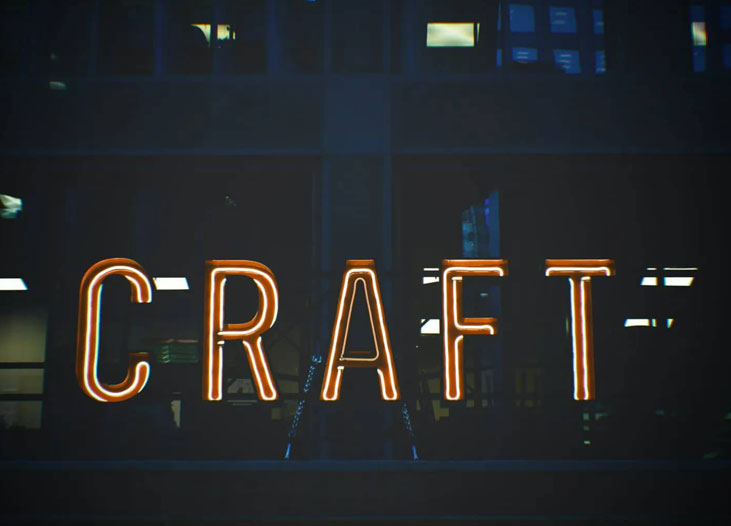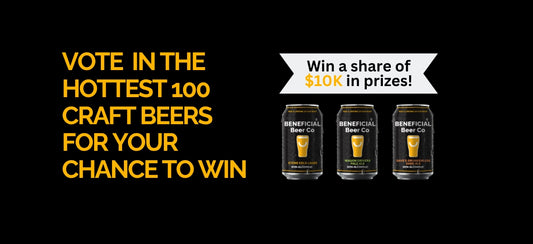You may already know that non-alcoholic beer, or at least, very low alcoholic beer dates back to the Middle Ages. It was definitely more of a health necessity (less contaminants and chances of getting sick from drinking water) than a tasty alternative to alcohol.
LET’S TAKE A TRIP DOWN MEMORY LANE
You may already know that non-alcoholic beer, or at least, very low alcoholic beer dates back to the Middle Ages. It was definitely more of a health necessity (less contaminants and chances of getting sick from drinking water) than a tasty alternative to alcohol.
Since then, there has been much debate as to which company can stake their claim for having created the world’s first branded “non-alcoholic beer”. As far as the internet can remember, it was in 1986 when Guinness launched their Kaliber pale lager.
Although not the first alcohol-free beer alternative, it had the full force of advertising power behind it, paired with a famous face (Billy Connolly) and became incredibly well-known in the market. As of 2001, the low alcohol/non-alcoholic beer industry had shrunk. Geoff Bond, Kaliber Brand Manager at the time said “consumers expect a lot from their lager nowadays”.
Prior to Kaliber’s flavour update and rebrand, it had been described as “bitter and unrefreshing” (in a published taste test no less) and was labelled as having a “soapy aroma that takes over”. This doesn’t exactly sound like a beer you’d welcome with open arms and a readied mouth!
DOES NON-ALCOHOLIC BEER DESERVE ITS BAD RAP?
You may be surprised to hear us say yes (…and no). Yes, early non-alcoholic beer efforts left a LOT to be desired. The technology was comparatively basic, and the flavour profiles for many were less nuanced and sophisticated, sometimes sickly sweet, sometimes soapy or even bland and underwhelming.
However, since the early 00’s, much has changed! In fact, even in the last few years, there has been an enormous shift in the industry, much to the joy of non-alcoholic beer fans. Alcohol-free beer brewing technology has undergone significant advancements, and more and more
beer breweries are lending their experience and utilising their business savvy to either add a non-alcoholic alternative to their wheelhouse, or are specialising in alcohol-free.

THERE’S CHANGE IN THE AIR FOR ALCOHOL-FREE BEER
Major Australian brewers are reporting an “explosion” in the popularity of non-alcoholic beer, and retail heavyweights BWS and Dan Murphy’s have seen alcohol-free beer sales more than double from June 2020-2021. 2Although there was a momentary surge in alcoholic beverages during the beginning of the pandemic, that has already slowed.3
According to The Centre for Alcohol Policy Research at La Trobe University, the number of 18-24-year-old Australians who don’t drink has doubled in the past 20 years. It’s not just Australia though and the young though – the concept of “health awareness” is on the incline, and alcohol consumption is decreasing abroad too.
The Middle East accounts for almost a third of worldwide sales of non-alcoholic and alcohol-free beer,4 and in Britain, there has been a significant decline in the frequency of drinking non-alcoholic beverages. As of March 2020, sales of alcohol-free beer were up by 30% since 2016, and North America reveals a similar pattern, with a rise in non-alcoholic beer consumption too.
It’s no secret that for many, alcohol is a social lubricator, and there is a ritualised nature towards drinking in many countries, (especially Australia). That’s why it’s even more of a testament to the flavours of the non-alcoholic varieties; people are socialising and having fun without relying on alcohol. According to Bree Coleman from drink retailer the Endeavour Group, the fact is Australians want to “drink less, but better”.
ONCE BITTEN SIPPED, TWICE SHY
For some, a non-alcoholic beer alternative that truly embodies “all the good bits” of beer; a similar taste, refreshing flavour, crisp finish – still sounds too good to be true. Even now, as the alc-free market faces huge projections of growth, flavour is still a question mark for some.
It’s important to note then, that across the industry, retailers say the quality of non-alcoholic options are better than ever. Just like with regular “hard” (alcoholic) beer, when it comes to non-alcoholic beverages, personal preference plays a big part, and it may be a case of tasting a few to find a perfect match.
For many, if being totally honest, alcohol beer may not have exactly been love at first sip. It is an acquired taste that took a few times to properly get into and develop an affinity with (good things can take some time to get accustomed to, after all)!
IT’S NOT YOU (WELL, IT’S A LITTLE BIT YOU), IT’S US
Yup, we’re changing; hangovers used to be an accepted reality of alcohol; one taken because the less tasty alcohol-free alternatives at the time didn’t have the power or appeal to draw you in.
Our perception towards being “healthy” and self-image has shifted too. Consumers now actively seek out lower-calorie beers to fit their lifestyles, fitness goals, work demands, mental health and a myriad of other considerations. So much so, that hard alcohol sales are expected to decline, just as non-alcoholic beer sales continue to increase. The message is: You don’t have to be a designated driver or pregnant to enjoy the benefits of alcohol-free beer.
Whereas drinking non-alcoholic beer, wine, even spirits or mocktails was perhaps once seen as taboo or unfashionable, it’s now the cooler choice. Alcohol-free was once a “trend for the ‘sober-curious’”. Many current non-alcoholic beer aficionados have already passed that stage and made it a permanent choice, or actively seek out low calorie alcohol-free beer as an “inbeertweener-sometimes” option.
Secondly, choice! The main options for a night out sans alcohol used to include a disappointing (sometimes even a bit gross) non-alcoholic beer, sugary juice/soft drink, heart palpitating coffee or boring water. Now, there is now choice – and what an array of choice there is! Plus, the ingredients are more varied and generally of a higher quality, thanks to smaller batches that come from:
THE RISE OF CRAFT
Aussies are on to the non-alcoholic craft movement which has been blossoming in Europe for some time (it’s not out of place to see people sipping on a zero-alcohol beer during a Zoom work meeting in Germany for instance), and is now much more accessible here at home.
We are levelling up from “mediocre” alcohol-free to some truly magical non-alcoholic beer varieties emerging on the market. In 2020 alone, there were over 20 new options added just in Australia!
The welcome news for non-alcoholic sceptics? Alcohol-free beer is pretty damn great now!
- Full-bodied
- Hops coming through unlike anything before
- Respectable mouthfeel
- Reputable brewing process
- Experimental, new flavours blended with classic tastes
- Many brands are low calorie
- Healthier (vitamins + minerals and waaay less impact on the liver)
- Hydrates you (unlike dehydrating alcohol)
- Say buh-bye to not-so-nice side effects and hangover blues
If we take Sydney as an example, we can see how far non-alcoholic has come. San Drinks, owned and operated by Irene Falcone, is a ground-breaking Northern Beaches liquor store full of anything but the hard stuff. Instead, there exists shelf upon shelf of non-alcoholic wines and craft beers as far as the eye can see.
In fact, your local bottle shop is *almost* guaranteed to stock a variety of good craft options (and big names too), And let’s not forget online (or the breweries themselves), where you can try a plethora of craft varieties to your hearts content – from sours to IPA’s, XPAS, stouts, pale ales, lagers, oh my!




